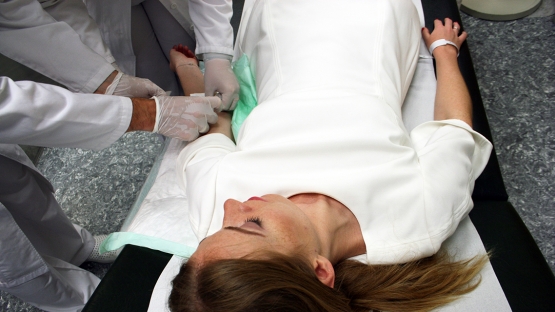The safety of patients and medical staff can be ensured when using radioactive substances for medical diagnosis and treatment. That was the message delivered at an IAEA General Conference side event on radiation safety in nuclear medicine today.
“Nuclear medicine is a complex discipline, rapidly expanding around the world,” said Peter Johnston, the IAEA Director of Radiation, Transport and Waste Safety, opening the event. “Safety and prevention of incidents affecting patients or staff needs to be a priority.”
Attended by more than 50 delegates from IAEA Member States, the event focused on increasing benefits, reducing risks and integrating radiation protection in the quality management systems of nuclear medicine departments at hospitals.







